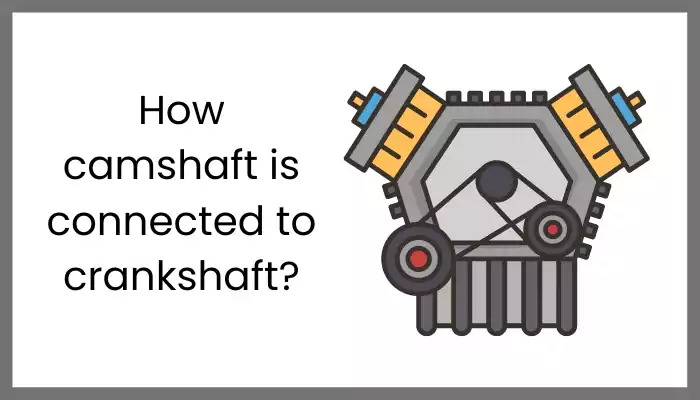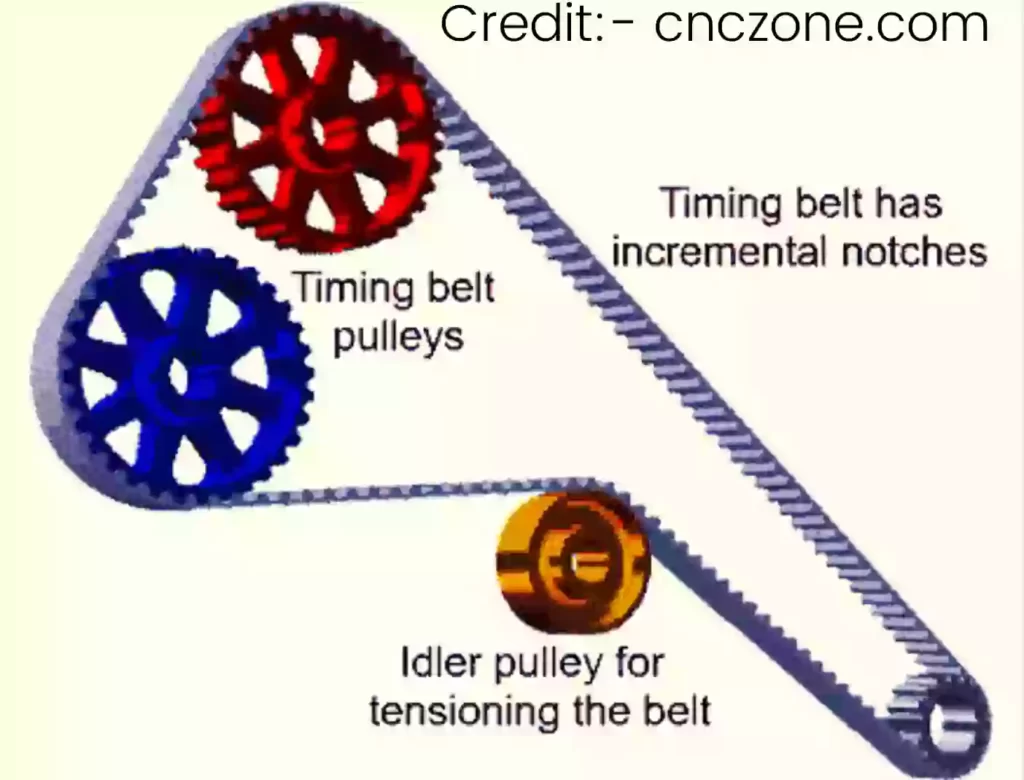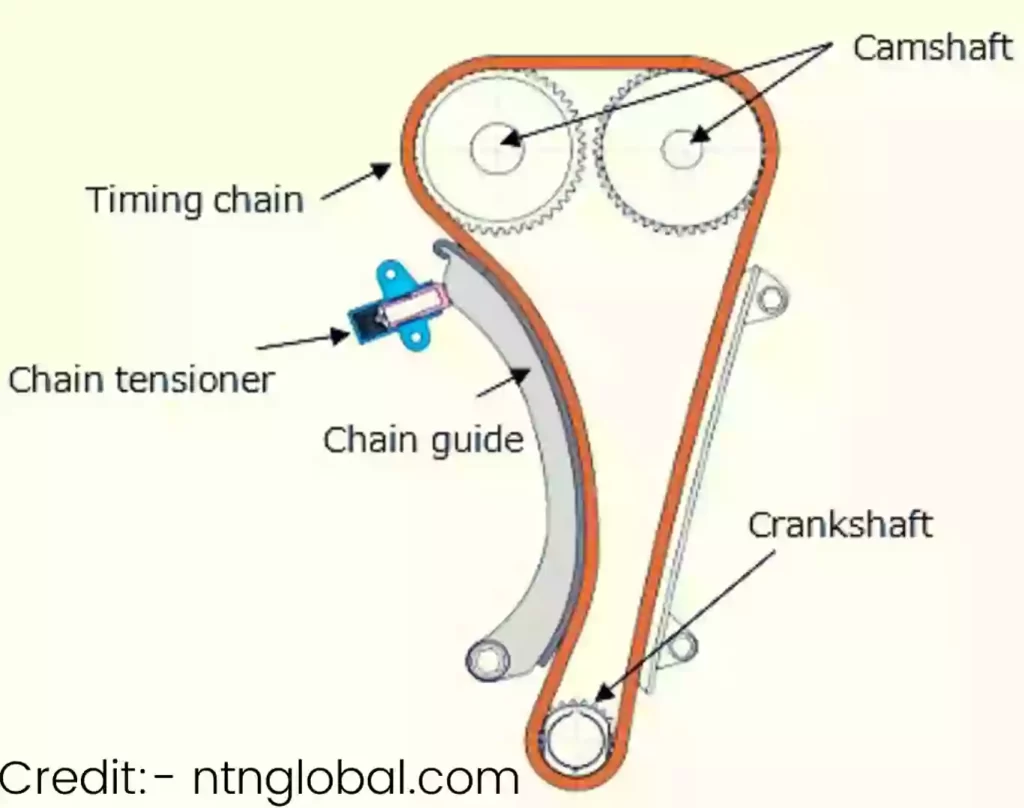The camshaft is connected to the crankshaft by three different methods: Timing belt, Timing chain, and Timing gear.

Let’s take a quick look at the camshaft before we get into the detailed solution to our topic.
In this article, we’re going to discuss:
- Camshaft:
- How is Camshaft connected to the Crankshaft?
2.1. Timing belt:
2.2. Timing chain:
2.3. Timing gear: - What happens when the Timing chain/Timing belt breaks?
- Last words:
Camshaft:
The purpose of the camshaft in the engine is to actuate the intake and exhaust valves at a particular time. It is necessary to operate the intake and exhaust valves at an accurate time for the proper functioning of the engine.
Mostly the single-cylinder engine has a single camshaft while the multicylinder engine has two camshafts to operate intake and exhaust valves. It is generally connected to the valves through rocker arms. The camshaft is powered by the crankshaft through various drives.
How is Camshaft connected to the Crankshaft?
The camshaft can be connected to the crankshaft by the following methods:
1) Timing belt
2) Timing chain
3) Timing gear
In all these methods of driving a camshaft, it is necessary to avoid slip because it can disturb the valve timing and it will disturb the efficient working of the engine. Improper valve timing can damage the components like valves, rockers, etc.
Let’s see all three methods, and how they work to transmit power from camshaft to crankshaft.
Timing belt:

The timing belt mainly consists of the following four components:
a) Timing belt
b) Crankshaft pulley
c) Camshaft pulley
d) idler pulley
The timing belt is the toothed belt mounted on the toothed pulleys fixed on the crankshaft and camshaft. The pulleys of the camshaft and crankshaft have a gear ratio of 1:2 as both valves open for a single time for two revolutions of the crankshaft. The camshaft pulley is two times larger than the crankshaft pulley.
Mostly the single-cylinder engine has one camshaft while the multi-cylinder engine has a separate camshaft for operating inlet and exhaust valves.
The idler pulley is also used to tighten the belt onto the pulleys to avoid slipping. Because the slipping of the belt will lead to false timing of valve opening.
The life of the timing belt is generally lower than that of the life of the timing chain.
Timing chain:

The components used to run the camshaft by the timing chain are,
a) Timing chain
b) Chain guide
c) Chain tensioner
d) Crankshaft and camshaft sprocket
The sprockets mounted on the camshaft and crankshaft have a gear ratio of 1:2. The timing chain is mounted on all three sprockets and the chain guides are arranged in the middle of the two sprockets.
The chain guide helps to guide the chain and to avoid resonance in the chain. It also requires a chain tensioner to ensure the fitting of the chain around chain sprockets.
The timing chain has comparatively more life than timing belts. It can handle higher power than a timing belt therefore it is generally preferred in heavy-duty vehicles.
Timing gear:
It is a compact method to connect the camshaft to the crankshaft. It mainly consists of the following components:
a) Crankshaft gear
b) Intake camshaft gear
c) Exhaust camshaft gear
d) Idler gears
The smaller gear is mounted on the crankshaft while both camshaft gears have the same size mounted on each camshaft. In some cases, the idler gear is used to adjust the spacing between two shafts. The gears are generally lubricated by the engine oil.
What happens when the Timing chain/Timing belt breaks?
When the belt or chain breaks in running condition, the camshafts suddenly stop rotating. Therefore the intake and exhaust valves also stop their working. Hence the engine suddenly stops in running condition.
As the camshaft stops rotating, some of the valves remain in open condition. But the engine never immediately stops its working due to inertia. Hence in the case of interference engines, the piston hit these opened valves. Because of this, there are chances of failure in valves rockers, and cams. In some cases, the camshaft also gets bent.
But in the case of non-interference engines, the piston never hit the valves because of the presence of clearance.
It also stops the working of other accessories that are powered by the timing belt like the fuel pump, coolant pump, etc.
Last words:
The camshaft can actuate valves accurately because of the timing chain, timing belt, or timing gear. The improper setting of the timing system can affect the engine performance hence the timing system is handled by experts.
Read also: